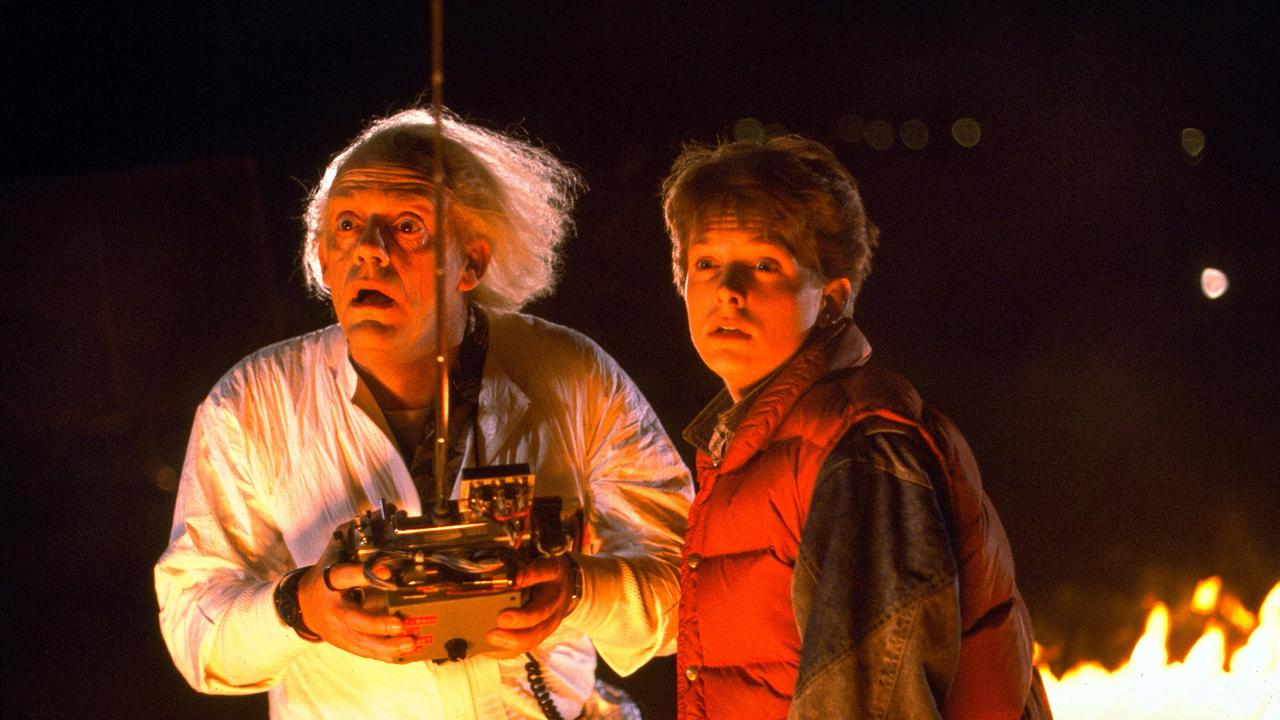Sydney as you’ve never seen it before
The thankfully unrealised architectural visions for the harbour city and photos from Federation capture Sydney’s colourful history.
Sydney was the first city in Australia, but it is by far the youngest first city in any continent in the world. Elsewhere, cities can be many centuries or even millennia old, built and rebuilt like a palimpsest over the earlier layers. In Paris, the streets are overwritten with hundreds of years of history, with the traces and memories of great minds and grim events. The most ancient part of Naples rises on the street plan and even the foundations of the Hellenistic city.
In Australia there were no cities, towns or even villages until the end of the 18th century. The Indigenous people led a life that was still far from the preconditions of urban settlement. But what is surprising is that nothing was built by others like the Javanese, and especially by the Europeans after they encountered the southern continent in the course of their travels: for almost 200 years, there was not a settlement, a trading post, a military base, a port, or any kind of construction.
Then, the year before the momentous events of the French Revolution, a first settlement, a penal colony, was established in Sydney; a very small event in comparison, but one that in the end turned on the clock of Australian history, so that for better or worse, and with all its moral complexities, the current date of Australia Day, tediously argued about every year, remains decisive and indeed inescapable.
What started as a tiny foothold on the edge of a vast continent grew rapidly, thanks to the energy of the British settlers, the most dynamic people in the world at that time. It is remarkable to reflect that two of the handsomest buildings in Sydney today, St James’ Church and the Convict Barracks opposite, were established within 30 years of the First Fleet’s arrival. Three decades later again, the University of Sydney was begun.
The history of Sydney is considered from two points of view in separate exhibitions at the Museum of Sydney. The first is drawn from an immense archive of documentary photographs of life in Sydney that were taken under the auspices of the NSW Government Printing Office from 1870 until the late 1940s; of the tens of thousands of negatives in this archive, 28 have been selected, like soundings into an immense reserve of memory.
Among the oldest is a panorama of Federation Day on January 1, 1901, recording the reading of the Proclamation of the Commonwealth by Queen Victoria and the swearing-in of our first governor-general, Lord Hopetoun, and first prime minister, Edmund Barton, in Centennial Park, surrounded by a crowd of 60,000 people, many of whom had no doubt taken part in the 8km procession from the Domain. The photograph shows the temporary pavilion erected for the occasion; in 1988 a new Federation Pavilion was built on the same spot, housing the Federation Stone, a hexagon symbolising the unification of the six colonies.
The new nation was still very sparsely populated, and a picture from 1909 documents the arrival of assisted migrants; Australia’s population has steadily grown but also changed in its ethnic and cultural composition through successive waves of migration both before and after federation. It is interesting to reflect that the Left today hates “colonists” and “settlers” but loves “migrants” and especially “refugees”; in the bigger historical perspective, all these labels refer to forms of population movement, sometimes gradual and sometimes rapid, that characterise history everywhere.
One picture is particularly striking as we emerge from almost three years of Covid; it evokes the Spanish flu that ravaged the world a century earlier, in the aftermath of the World War I. The photograph shows masked doctors and nurses, two in a car and two on a motorbike and sidecar – both marked SOS – about to leave the Influenza Relief Depot at Blackfriars.
In the aftermath of war and pandemic, Australia in the 1920s began to develop an ethos of health, fitness and outdoor life, especially associated with the beach and the surf. Health programs were introduced at schools, and one photograph from 1923 shows pupils at a public school in Chippendale holding up banners proclaiming some of the principles of the new curriculum: “Drink milk every day”; “Sleep long hours with windows open”; “Have a bath every day”; “Eat fruit and vegetables”; and even “Drink water every day” – surprising because fizzy drinks were surely scarce at the time and obesity would not become a crisis until the end of the 20th century.
The second exhibition looks at the history of projects for redesigning parts of the city of Sydney, but which were never carried out. As was demonstrated in an earlier exhibition at the Museum, Demolished Sydney – which I reviewed in February 2017 – the city has a terrible history of destroying its own heritage, and more recently a notable turnover of modern office blocks and other structures that are put up, used for a generation or so and then torn down and replaced.
When the process of rebuilding and development occurs more carefully, tactfully and slowly, cities achieve that sense of depth and historical layering that I referred to before as something like a palimpsest, where we are constantly aware of the layers of human life and of urban history that lie beneath or survive alongside the most recent structures.
Sydney’s approach to redevelopment – and no doubt this is true of many other cities – has too often involved wholesale eradication of the past, clear-felling of history, and then reconstruction as though on vacant land. The result is to produce that distressing sense of shallowness and soullessness that is characteristic of so much Australian post-war urbanism, and which has destroyed the character of many regional towns as well.
The most appalling case was the proposal, or rather a series of proposals beginning in the 1930s, for redeveloping Macquarie St, most which would have entailed destroying the surviving historic buildings of that precinct, including Parliament House, the Mint, Sydney Hospital, the old Law Courts in King Street, and even the Convict Barracks which, like St James’ Church, had already outlived generations of disposable concrete office blocks.
The indiscriminate demolition originally envisaged was stalled by the World War II, and in its aftermath the formation of the NSW National Trust in 1945, soon followed by other states, marked the beginning of a new understanding of conservation. It is hard to imagine today that, until the Green Bans of the 1970s and 1980s, conservation was still considered a “conservative” cause, dismissed by “progressives” and capitalist developers alike.
One of the fundamental problems in all of these schemes is that the new structures that were proposed to replace the old were inevitably ugly, inhumane and alienating. Those new buildings that were eventually put up are today the ugliest in the street. Fortunately one of them, the extension to the Registrar-General’s building, is now going to be demolished to create a square in honour of Queen Elizabeth II, which will also open the barracks and Macquarie St to the Domain park beyond.
The architectural heritage of the Rocks and Woolloomooloo did not have quite the same value as Macquarie St, but plans for their redevelopment were even more brutal and extreme. Looking at the various projects for the Rocks area, one can’t help feeling the 1960s must have marked the nadir of cultural memory and sense of human history, even as, inevitably, the countervailing forces of conservationism were also growing (the National Trust of Australia was incorporated in 1965).
The designs for the Rocks are not only nakedly commercial and faceless, but seem driven by a positive urge to erase the past, to eradicate all traces of the history inscribed in the site for almost two centuries. Contemporary attempts to clear such Victorian inner-city quarters as Paddington and Surry Hills often claimed that they were insalubrious, derelict and nests of poverty and crime. But here there seems to be a more radical aim of expunging the very origins of the colony to replace it with an efficient, hygienic and impersonal environment imagined as more conducive to health, happiness and prosperity.
There was also sheer greed in the notoriously corrupt and partly successful efforts to destroy and redevelop Victoria St in Kings Cross. Woolloomooloo Bay would, like the Rocks, have turned into another urban jungle of high-rises with windswept open spaces at street level; creating a public space, like the squares that are so appealing in European cities, really depends on the quality and humanity of the built fabric that surrounds them; an empty space is not a square.
The most conspicuous of all the precincts in the exhibition is Circular Quay itself and its eastern shore, extending to Bennelong Point. Looking at the various proposals for the Opera House makes one realise once again how grateful we should be to Jørn Utzon – and indeed to the selection committee that had the imagination to understand his vision and allow him to realise it, even if imperfectly.
The majority of the rejected designs are remarkable for their ghastliness – yet more examples of sterile modernist design – but also for their absolute failure to speak to the site; Utzon alone imagined a building that seems to arise organically from the water and could not be as effective in any other setting. This is still probably the best match of architecture to site in recent times; at the other extreme is the monstrosity of the National Museum in Canberra, a building so ugly that it almost makes one long for the banal concrete brutalism of other important public buildings of the later 20th century in the federal capital.
The eastern shore of the Quay was also the subject of long debate and controversy before ending up with a row of uninspired apartment blocks. But the most important area that still awaits a new vision is Circular Quay itself, blighted by the construction of the Cahill Expressway in 1955-58.
What kind of city builds an expressway along the front of its principal bay, cutting off the natural flow of space from the urban fabric to the waterside? Clearly one that does not really understand itself as a city, that is a place for social and in the broadest sense, political life; one that thinks of itself only as a collection of workplaces and traffic arteries to get in from and out to where people actually live, in the suburbs.
Most of the unrealised visions for Sydney in this exhibition have been narrow escapes for the city, but there is one near the end that remains an appealing possibility. Like any serious solution to the Quay problem, it relocates the road and train traffic of the Cahill Expressway and thus opens the city of Sydney once again to the water, air and life of its harbour.
S
n



